Imagine transforming your dimly lit office into a vibrant oasis with the simple addition of lush, resilient houseplants. Whether you’re taking your first steps into the world of gardening or you’re a seasoned plant enthusiast, this guide to the best plants for low-light environments will inspire and empower you to green up your workspace with ease and confidence.
In the pages ahead, you’ll discover a curated selection of hardy beauties that thrive in low-light conditions, bringing life and charm to even the darkest corners of your office. Not only will these plants enhance your surroundings with their natural beauty, but they will also purify the air, reduce stress, and boost your mood, turning your workspace into a sanctuary of productivity and peace.
Get ready to embark on a rewarding journey that will fill your office with life and energy, all while requiring minimal effort. With our expert tips and practical insights, you’ll be equipped to nurture these plants successfully, experiencing the joy and satisfaction that comes with watching your indoor garden flourish.
Snake Plant (Air-Purifying Powerhouse)
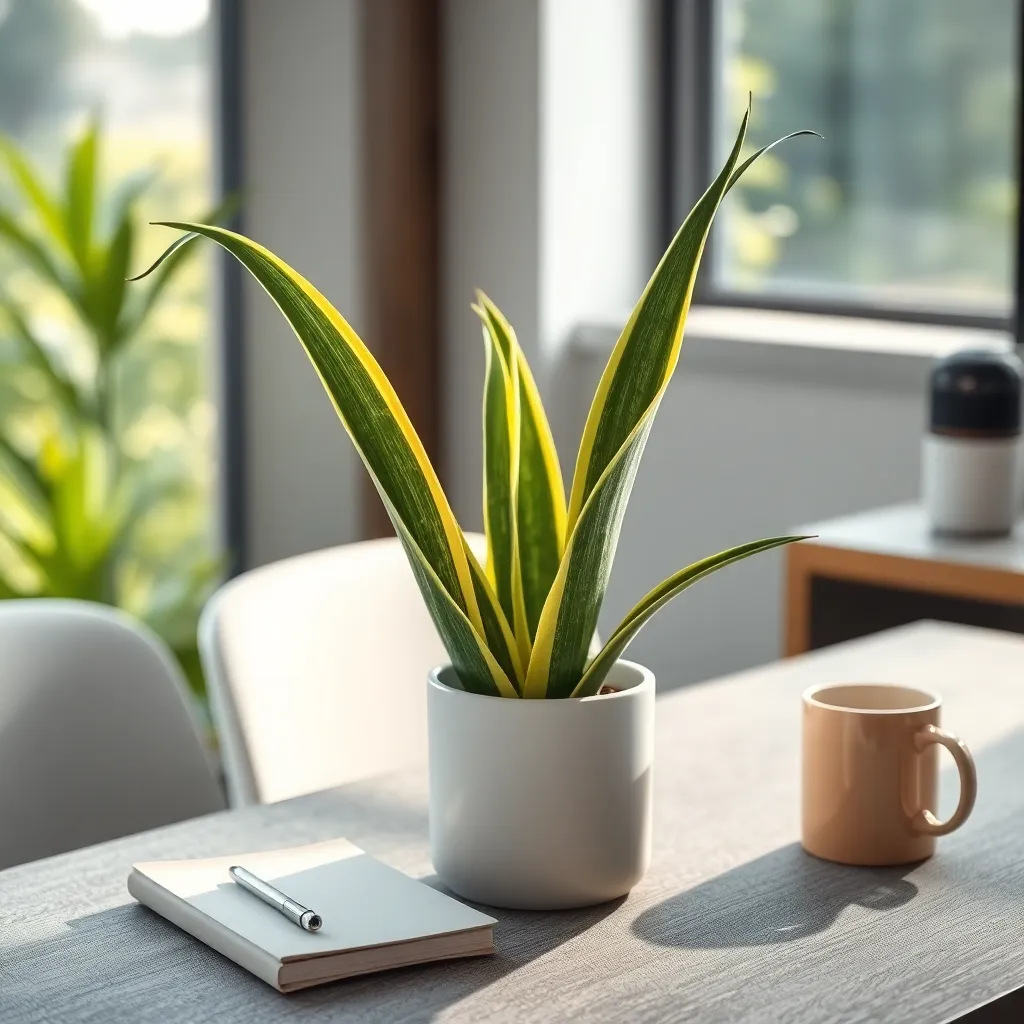
The snake plant, known for its robust nature, is a top choice for low-light office spaces. Its ability to thrive in various conditions makes it a perfect fit for those who may not have a green thumb.
One of the key benefits of the snake plant is its air-purifying capabilities, which help to improve indoor air quality. It effectively removes toxins such as formaldehyde and benzene, making it a healthy addition to any work environment.
For optimal growth, plant your snake plant in a well-draining potting mix, such as a blend of cactus soil and regular potting soil. Overwatering is a common mistake—allow the soil to dry out completely between waterings to prevent root rot.
While snake plants can tolerate low light, they will grow more vigorously in indirect sunlight. If you notice your plant leaning or reaching towards the light, rotate it periodically to encourage even growth.
Pothos (Vibrant Trailing Foliage)
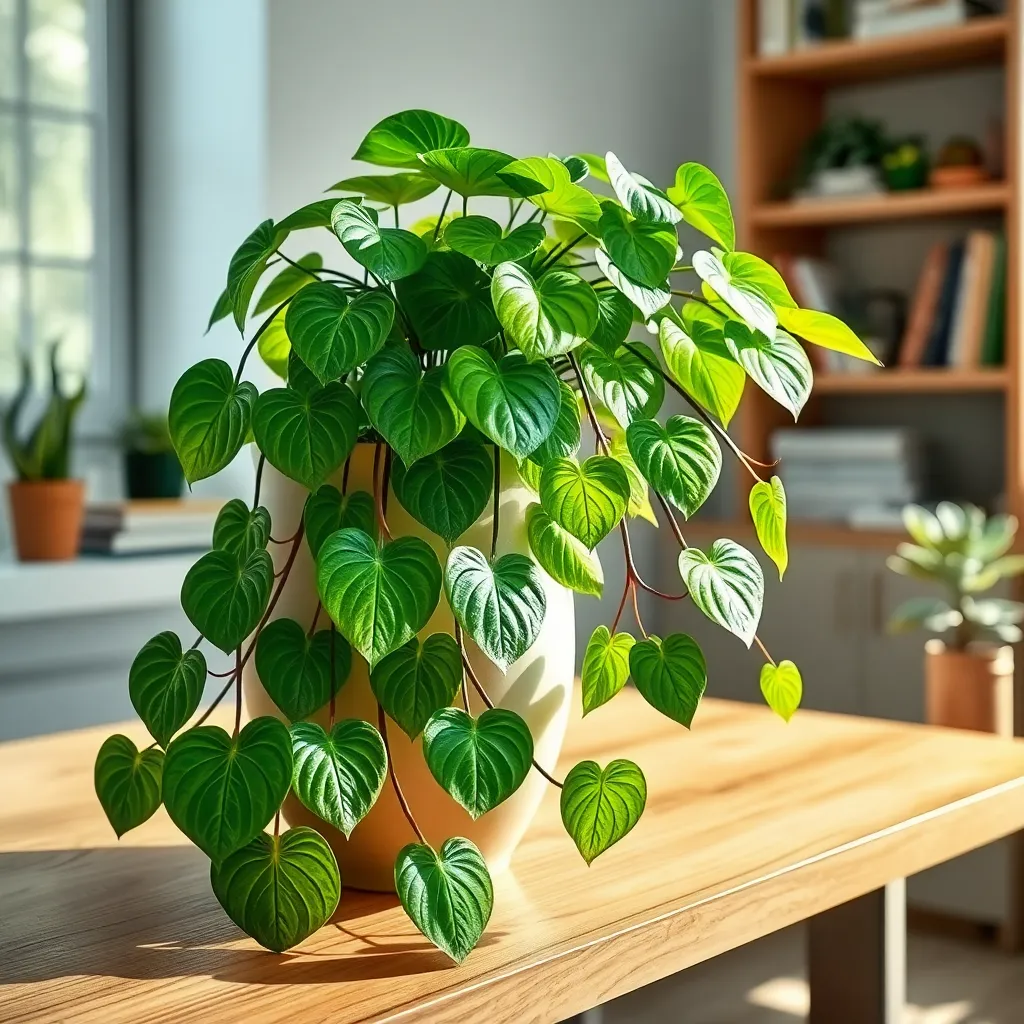
Pothos, known for its vibrant trailing foliage, is an excellent choice for low-light office environments. This hardy plant thrives in a variety of conditions, making it ideal for beginner gardeners who may not have a green thumb yet.
To care for your Pothos, ensure it is planted in a well-draining potting mix that allows air to circulate around the roots. Water the plant when the top inch of soil feels dry, which typically means every 7 to 10 days, depending on your office’s humidity levels.
While Pothos can tolerate low light, providing some indirect light will help maintain its vibrant leaf color and encourage growth. For those with more experience, consider propagating Pothos by cutting a stem below a node and placing it in water until roots develop, then transferring it into soil.
Regular pruning will keep your Pothos looking lush and full, preventing it from becoming leggy. Fertilize sparingly, as too much can lead to salt buildup; a balanced liquid fertilizer every 4 to 6 weeks during the growing season is sufficient.
ZZ Plant (Drought-Resilient Marvel)
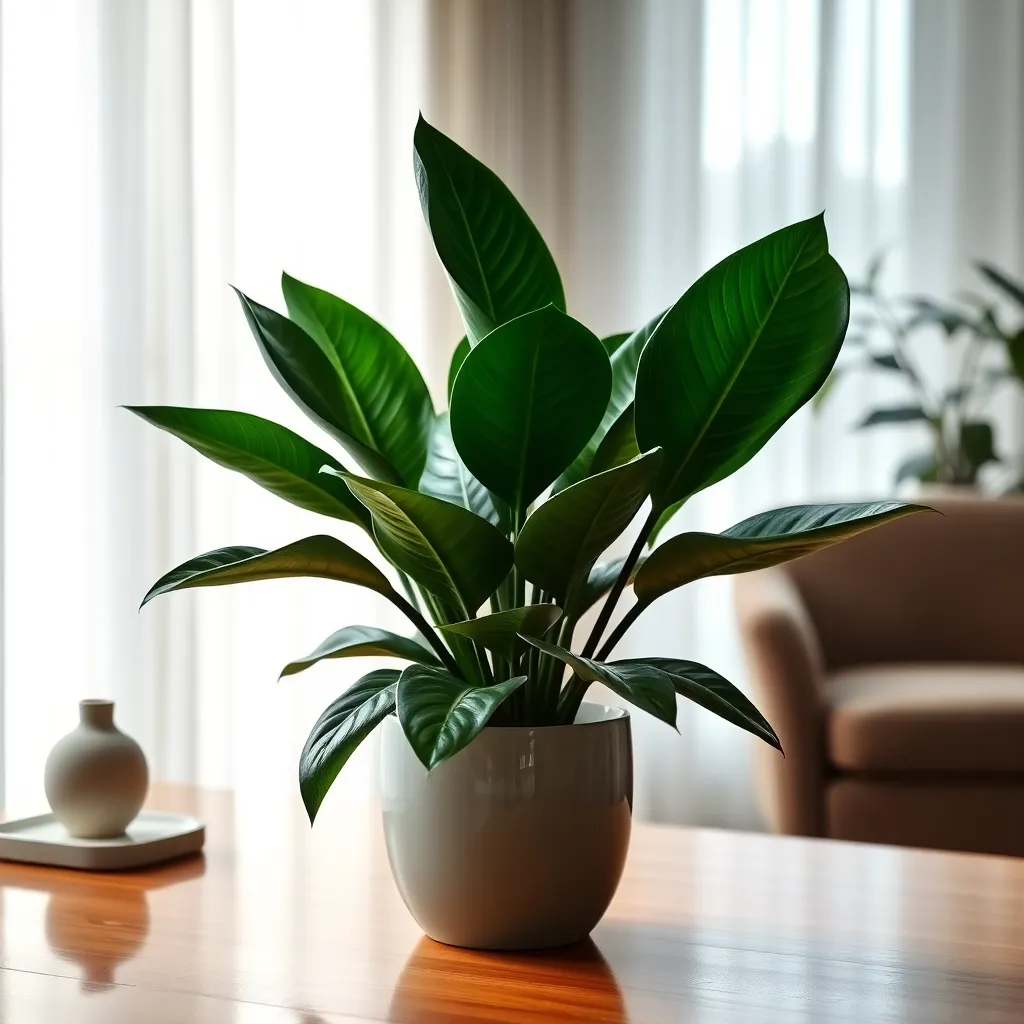
The ZZ Plant, known for its robust nature, is an ideal addition to any low-light office environment. Its ability to thrive on neglect makes it a perfect choice for busy professionals who may occasionally forget to water their plants.
When it comes to care, the ZZ Plant requires minimal attention and can tolerate a wide range of light conditions, from bright indirect light to low-light corners. For optimal growth, water the plant only when the soil is completely dry, which could mean every two to three weeks, depending on your office climate.
For those looking to elevate their plant care, consider using a well-draining potting mix, such as a cactus or succulent blend. Avoid overwatering by ensuring the pot has drainage holes, which help prevent root rot—a common issue with this drought-tolerant marvel.
Advanced gardeners might enjoy propagating the ZZ Plant through its rhizomes or leaf cuttings, which can be a rewarding way to expand your indoor garden. Simply place a healthy leaf in water or soil, and with patience, you’ll see new growth sprout over the coming months.
Peace Lily (Flowering Shade Tolerant)
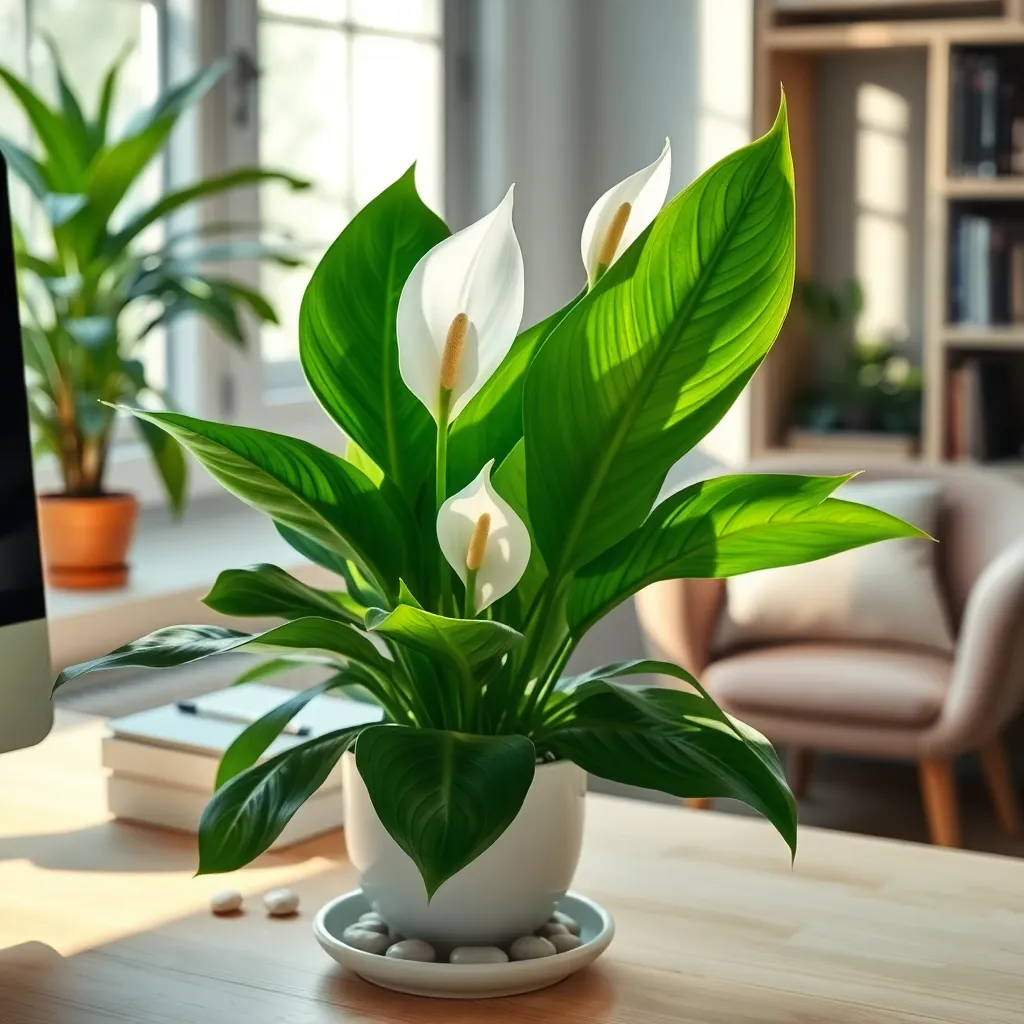
Among the best plants for a low-light office is the Peace Lily, known for its ability to thrive in shaded environments. This plant not only adds a touch of elegance to your space but also boasts air-purifying qualities, making it a practical choice for improving indoor air quality.
When caring for a Peace Lily, it’s essential to mimic its natural habitat by maintaining moist but not waterlogged soil. Water your plant about once a week, allowing the top inch of soil to dry out in between watering sessions to prevent root rot.
For optimal growth, use a well-draining potting mix rich in organic matter, such as a blend containing peat moss and perlite. Fertilizing your Peace Lily every six to eight weeks during the growing season with a balanced liquid fertilizer will encourage lush foliage and blooming.
While Peace Lilies are forgiving of occasional neglect, they thrive with a bit of extra care. Ensure your plant receives indirect sunlight; too much direct light can scorch its leaves, while too little can impede blooming.
Cast Iron Plant (Indestructible Greenery)
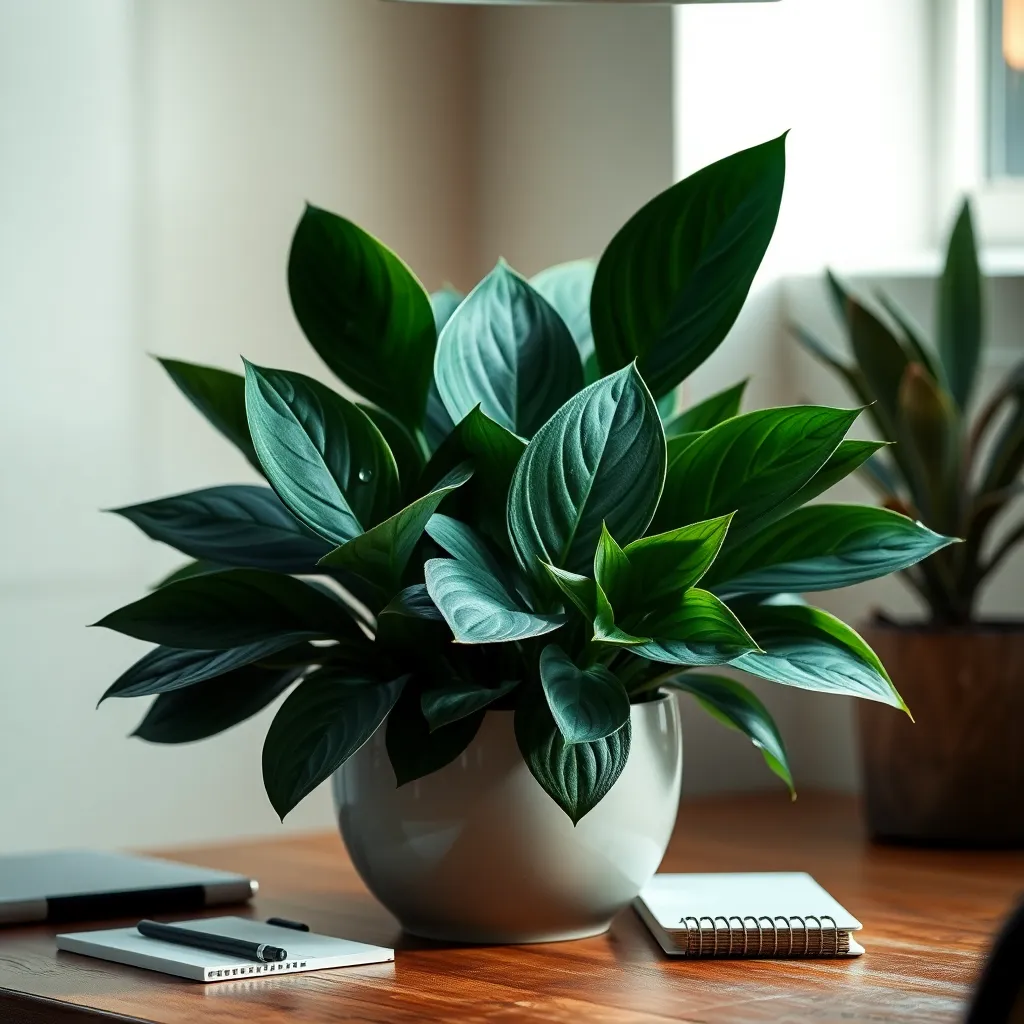
The Cast Iron Plant, also known as Aspidistra elatior, is renowned for its hardiness, making it an ideal choice for low-light office spaces. This resilient plant can thrive in conditions where many others might falter, including areas with minimal natural light.
To ensure your Cast Iron Plant flourishes, place it in well-draining potting soil, such as a mix designed for houseplants or succulents. Watering is straightforward—allow the top inch of soil to dry out between waterings to prevent root rot.
Temperature fluctuations are generally well-tolerated, but it’s best to keep the plant in environments ranging from 60 to 75 degrees Fahrenheit. Advanced tip: If you notice the leaves collecting dust, gently wipe them with a damp cloth to keep the foliage healthy and shiny.
Fertilize sparingly, using a balanced liquid fertilizer every 1-2 months during the growing season, typically spring and summer. In low-light conditions, the Cast Iron Plant grows slowly, so it’s crucial to be patient and allow it time to adapt and expand at its own pace.
Conclusion: Growing Success with These Plants
In navigating the vibrant world of office greenery, we’ve uncovered five key relationship concepts that can deepen your connection with your workspace and enhance your well-being. Firstly, understanding your environment helps you choose plants like the resilient snake plant, which thrive in low-light settings. Secondly, nurturing your plants fosters patience and attentiveness, vital qualities in any relationship. Thirdly, sharing responsibilities—such as watering or pruning—can build teamwork among colleagues. Fourthly, observing plant growth reminds us of the importance of consistent care and attention. Lastly, the presence of greenery can reduce stress, promoting a more harmonious work environment.
As an immediate next step, consider selecting a plant from the list provided and find a suitable spot in your office. This small addition can be a catalyst for positive change in your space and mindset. To ensure these insights are always within reach, bookmark this article for future reference. By doing so, you’re equipping yourself with tools to cultivate a thriving work environment.
Remember, successful relationships—whether with people or plants—are nurtured with care and intention. Embrace this journey with confidence, knowing that each step taken today can lead to flourishing connections tomorrow.

